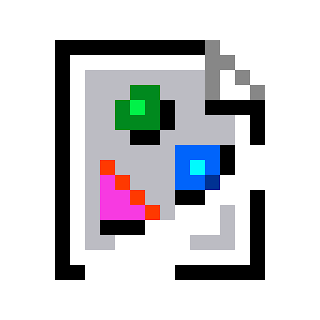I recently tried to play Wolfenstein New Order, I realized that unlocking the framerate makes the game break. why? (sorry for bad english)
You must log in or register to comment.
From video gaming to card games and stuff in between, if it’s gaming you can probably discuss it here!
Please Note: Gaming memes are permitted to be posted on Meme Mondays, but will otherwise be removed in an effort to allow other discussions to take place.
See also Gaming’s sister community Tabletop Gaming.
This community’s icon was made by Aaron Schneider, under the CC-BY-NC-SA 4.0 license.
- 0 users online
- 55 users / day
- 225 users / week
- 422 users / month
- 800 users / 6 months
- 1 subscriber
- 1.35K Posts
- 18.9K Comments
- Modlog








because it’s easier.
You have one “frame” where you just do everything: read the player input, do whatever actions, calculate collisions and physics and whatever, and draw everything when all those calculations are done.
Then you move on to the next frame and do everything again. Everything lines up all the time and always happen in the same order. Simple, quick, and consistent.
To decouple calculations and framerate, you don’t know when the game will try to draw something. It might be in the middle of when you’re calculating collisions, or moving the units, or calculating physics. Or you might end up doing multiple calculations while the GPU is slow and can’t draw anything.
So you have to add an extra layer in between, probably saved to some memory somewhere. Now every time the GPU draws something, it has to access that memory. Every time you calculate something, you also access that memory. Let’s hope they DON’T try to read and write on the same spot at the same time, that could cause bugs. And so much memory access, you’ve basically doubled your memory bandwidth requirements.
It’s complicated, more resource intensive, and introduces potential bugs.
And not just easier, but cheaper. On lower end platforms it’s expensive to do floating point calculations all over the place because you don’t know how long it’s been since the last frame. If you can assume the frame rate, you can get a lot of performance back too.
Not a game dev but I’ve done some programming and I love games so I’ll take a stab. There’s a few reasons I can think of:
Wolfenstein New Order was made by Machine games and used ID Tech 5, same as Doom 2016. Nothing to do with Bethesda or their Creation Engine. Bethesda only published it.
I suppose that’s what I get for just doing a quick google 🙃
That is really interesting though, my understanding is that Doom 2016 is known for running pretty well and achieving high framerates, or at least that was the sense I got from tech youtube when I watching that more. I wonder what the devs were doing in that case.
At least it’s not Destiny 2 where incoming damage is tied to frame rate such that the higher yours is the more damage you take.
wait, for real? why? 🤨
Damned if I know. It’s possibly the stupidest decision I’ve ever seen in a big name game. But yeah sometimes you’ll be walking around and just all of a sudden get obliterated out of nowhere and it was because you got mapped by an NPC rocket with damage tied to frame rate. There’s YouTube videos of people proving it works this way iirc; I know people used to post testing videos on R.
I don’t know this specific case, but my guess is that damage is a set amount per frame that a collision overlap is happening. This is perfectly valid if it is biased by the delta between frames. It means things get a little wonky at low framerates, but largely work well. But if you are assuming a frame is an exact length, you save a multiplication action, but gain the problem of unlocked frame rates breaking things (and frame dipping possibly causing problems).
Because it’s easier to programm a single thread that executes a sequence of commands like [ update-gamelogic, update-graphics, etc. ] instead of at least 2 threads (for gamelogic and graphics) that you have to synchronize somehow. Synchronization can be pretty difficult!
Tying game logic to the framerate doesn’t really have anything to do with single- vs multi-threading. You can properly calculate the time since the last update in a single-threaded engine.
It’s not about that.
If the game loop doesn’t run at the same speed as the render loop you’ll get ‘tearing’ - some game objects are at the latest state, some are not. That can cause some funky bugs.
From my understanding, tearing can occur even if the game logic and render command submission happen on a single thread, since it’s a consequence of the OS compositor sending buffers to the monitor in the middle of rendering.
correct, but now you’ve just identified two separate types of tearing, both happening at different times. put them together and the perceived frequency will be significantly worse than it was prior.
being able to zero one of those out and only worry about the other means you can hopefully optimize a better solution - as much as one can when you can’t realistically atomically update the entire display from top to bottom.
deleted by creator
This video might give you a good idea of what’s going on behind the scenes and why things are not trivial to get right: https://youtu.be/yGhfUcPjXuE
Let’s say you don’t tie game mechanics to frame rate. How often should you update the state of the game? 50 times / second? 100 times / second? You need to pick a fixed rate if you want to keep the physics engine consistent. If you make the rate too high the game will not run on low-end machines, so you need to find the right balance.
But let’s say you make it 100 times / second. Now between those updates, nothing changes. You can render at 500 FPS, but you’ll be rendering the same thing five times before anything changes, so the extra frames are useless. There are ways around this. You could perform interpolation of object positions between the previous state and the new state (but this introduces input lag). You can keep things that don’t affect gameplay (e.g. eye-candy animations) running at the full FPS. But none of these things are trivially obvious. So it becomes a question of ambition, competence, and the will to put time (i.e. investor’s money) into it. Hence many projects simply prioritize other things.
A big problem with an unlocked framerate is the physics system, which you can generally solve in two ways:
So Wolfenstein New Order probably went with the first approach, made sure their physics system stays stable within a certain FPS range (30-60), and then locked the FPS beyond that.
Its mostly the game engine, usually.
In the past, games were developed with specific hardware in mind. They didn’t really think of how their game would run on modern PCs 25+ years later. Some games even used that as a feature, famously, Space Invaders devs noticed that the game started speeding up as players destroyed more of the enemies because it didn’t have to render them and so it made the game harder as you progressed which was more fun!
By the way, there are ways to run retro games with speed limiters, you’ve just got to look into it more.
Remember all those early 90s PC titles that were tied to processor speed so they just ran at a mental pace when the next generation launched?
Reminds me of LEGO Island where turning is tied to frame rate.
Yeah the video by MattKC on that topic is a great watch.
It can simply engine design to not separate the concept of “game ticks” with framerate.
You can do everything in one swoop such as calculate physics, run NPC AI code, update game state, and render the frame.
This is not correct. Modern game engines support both concepts.